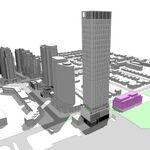Northern Light
Superstar
There is no new zoning reform being highlighted in your post.
Nor a specific example of a past reform being exemplified.
Don't become the new Walter please.
The whole concept of ownerSHIP is over rated...You are talking about air rights at this point.Shooting in the dark here, if anyone has fulsome responses please dm/pm...
Hypothetically speaking, what is the easiest path for my friend Sally to put 3+ units on a SFH lot that can be sold for individual ownership? Sally is agnostic about what municipality this is in. Failing this, could a condominium be made to work on a SFH lot without running a loss? Again, if so, how/where?
I do also find this on-topic, because most new zoning changes (while great) are not suited to ownership arrangements. And Sally would like to avoid any need for subdivision applications and so forth.
Lol you don't have to convince me... It's Sally who's stubborn. I'm pretty sure BC has an air rights-like solution to what I'm asking, though.The whole concept of ownerSHIP is over rated...You are talking about air rights at this point.

I guess the rest of the world, including Europe, is an unliveable hellscape. Or maybe there is room for nuance.There has been much discussion on UT in the recent past of accepting a single elevator (or no elevator) in new multi-res buildings.............something I have vociferously objected to as an undue hardship on those
with accessibility challenges, including but not limited to those who use a mobility aid (wheelchair, scooter, rollator, walker etc.)
A story in The Star highlights that notwithstaning the presence of two elevators, there is currently no working elevator at Toronto's largest homeless shelter.......and that has imposed severe hardships on those who rely on said shelter.

Residents at Toronto’s largest homeless shelter left stranded after both elevators shut down
Toronto’s largest homeless shelter has been without its main elevator for five months. This week, the 581-bed facility’s backup, a smaller service lift, also stopped working.www.thestar.com
From the above:
View attachment 587681
View attachment 587682
View attachment 587683
Clear as day to me, under no circumstances should one or zero elevators be acceptable in multi-residential housing with more than 3 storeys. Not now, not ever.
Even two can be problematic.........but one or none is nothing but high-risk, and cruel.
I guess the rest of the world, including Europe, is an unliveable hellscape. Or maybe there is room for nuance.
Think it's more of a building maintenance issue here. It shouldn't take five months to fix an elevator. edit: I don't mean to imply elevators should be eliminated. But that in this case the issue is complicated by what seem like abysmal maintenance practices.
Maybe we end up with less affordable accessible housing instead of more by making it onerous to build small scale midrise buildings.
How many ground floor units could we have in these buildings that do not even require one much less three elevators to be accessible.
But probably not.Maybe we end up with less affordable accessible housing instead of more by making it onerous to build small scale midrise buildings (8 storey/32 unit).
If the savings are so insignificant, I suppose we wouldn't see the industry adopt the model even if it were permitted. Toronto is allowing a great deal of unliveable housing to be built as it stands by your standard in the form of very small units with inadequate kitchens that would do very poorly in the event of power loss for heating and cooling.The difference in costs associated with a single (extra) elevator in a midrise are equal to less than 1% of projected rent or sales price. Its not a material argument in my judgement.
If the savings are so insignificant, I suppose we wouldn't see the industry adopt the model even if it were permitted. Toronto is allowing a great deal of unliveable housing to be built as it stands by your standard in the form of very small units with inadequate kitchens that would do very poorly in the event of power loss for heating and cooling.




